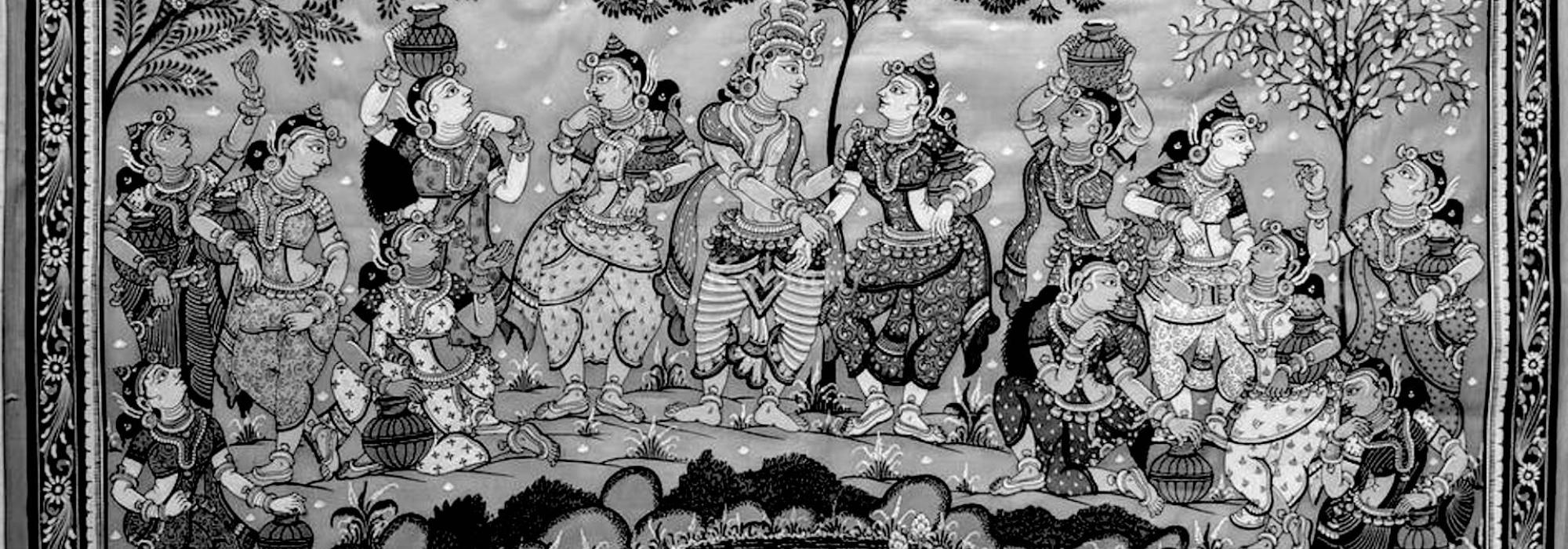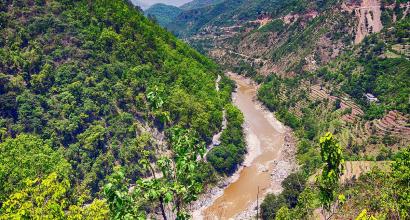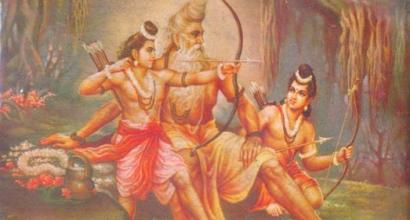“tat sṛṣṭvā tadevānuprāviśat anena jīvenātmānupraviśya nāmarūpe vyākaravāṇi.” The Upanishads mention this line about the Paramatman’s manifestation in the gross body. The non-dualists aver that the Paramatman first creates the body and then enters into it as jiva. In the Vedas, there is a non-duality indicator in the phrase, “anena jīvenātmanā.” However, the dualists supply the word saha and mention “jīvenā-saha,” meaning “along with jiva.” The mention of this manifestation occurs in the Bhagavatam.
svamāyayā sṛṣṭamidaṃ sadasallakṣaṇaṃ vibhuḥ|
praviṣṭa īyate tattat svaraupognirivaidhasi || (11.7.47)
The Paramatman enters bodies such as the celestial and the human which he has created through Maya. Akin to how fire is inside a log of wood, he appears in the respective forms of these bodies.
sruṣṭvedaṃ manasā viśvātmanānupraviṣya yaḥ |
guṇaiḥ kurvadbhirābhāti karteva svapnadrugyathā || (12.10.31)
You create this world by your mind and then you enter it, and through gunas such Sattva, akin to how one witnesses a dream, you show yourself as if you are the doer.
Here, it is mentioned that the world has been created by the ‘mind.’ Thus, it becomes necessary to inquire whether this mind-creation is some kind of magic or whether it is indeed real. In many places in the Bhagavatam, there are descriptions that the Paramatman creates, maintains and destroys the world through his Maya. In all such instances, the word “Maya” occurs hundreds of times. So, what is the nature of the creation that occurred through Maya? Because every work is performed through the conscious intellect (Buddhi), it is clear that the mind assists it. Therefore, it is not necessary to explicitly use the word “by the mind.” It is mentioned that the gunas are the doers and that the one manifesting (the body) merely appears as the doer. Then it is also said that he is witnessing a dream as it were. So, who is it that performs the act of creation by the mind, who enters the body, who appears as the doer?
The exposition of Vedanta falls in three major traditions: Advaita, Dvaita and Vishishtadvaita. We have firmly tied ourselves to one of these traditions. Thus, in texts like Upanishads, Bhagavad Gita, Brahma-Sutras, and Srimad Bhagavatam, we try to find elements that conform to the tradition we believe in. We wantonly stretch the terminology and words in these texts and try to stubbornly prove that it is exactly our tradition that is found therein. However, we don’t exhibit this stubbornness in philosophical schools such as sāṅkhya and vaiśeṣika. This is because we have no devotion or attachment to them and therefore we regard their hypotheses dispassionately. But the moment we enter the realm of Vedanta, our objectivity flies out of the window. When the pride of ownership arises, the vision of objectivity is clouded by attachment. This is entirely consistent in our dealings in worldly affairs.
Srimad Bhagavatam itself declares that it is the essence of all of Vedanta. This statement has been met with universal acceptance. The Puranas have set out to vastly expand the meaning of the Veda. Indeed, in the Bhagavata Purana, we observe how entire Vedic verses are reproduced verbatim and their word-by-word meanings are explained. The Bhagavatam explains the same topic not once or twice but twenty times. Because the topic is difficult, it is taken up as part of different episodes and elucidated upon so that this method of repetition helps deliver greater clarity of meaning. This is also the purpose of the Bhagavatam. However, traditional commentators explain such philosophical topics according to the method devised by their sect or school. It has remained impossible for them to untangle themselves from the chains of orthodoxy. It appears that we have been unable to develop an objective view. We do not seem to understand what the work is really saying sans bias. We try to force-fit our opinions into the work. We try to stretch the sentences in the work so that it somehow agrees with our opinion.
Our Sastric scholars have laid down that in order to establish the essence of a philosophical work, we must follow specific methodology such as upakrama. Because it is impossible to describe all of them in the constraints of this piece, we can only consider the abhyāsa method. abhyāsa means repeating the same subject over and over in consonance with the context. The sentences (from the Bhagavatam) cited below should hopefully make scholars and thinkers reassess their views as to the philosophical direction which the Bhagavatam points to. The Parabrahman is second to none. Nothing else exists apart from it.
1. Everything that is perceived through the mind or speech or sight or through other sense organs, all of it is “I, and nothing but I.” Understand this truth through philosophical contemplation. (11.13.24)
2. Nature is the applicatory cause for the effect known as the world. The Purusha is the supervisory edifice for Prakrti. Time is what brings disturbance to Prakrti. I, who am verily the Parabrahman is also the three: Prakrti, Purusha and Time. (11.24.19)
3. The Ultimate Truth does not have distinctions. If anyone thinks that distinctions exist, such a person is ignorant. However, the distinctions that are manifested in the world are akin to microcosmic and macrocosmic Space, akin to the Sun inside water and in the sky, and akin to the air that exists inside our body and in the atmosphere. It is a mere apparition. (12.4.30)
4. Time, space, operation, doer, cause, activity, knowledge, matter, and fruit – through Maya, Sri Hari has manifested as these nine forms. (12.11.31)
5. nānyad bhagavataḥ kiñcid bhāvyaṃ sadasadātmakam (2.6.32). There is nothing in this world that is beyond Bhagavan.
More such phrases and verses may be seen: 2.6.15, 2.6.41, 2.7.39, 2.5.14, 6.4.47, 6.16.51, 8.3.3., 11.13.31, 11.28.6, 11.28.19, 12.11.31.
The Paramatman is Attribute-less, Unqualified, Pure Knowledge and shows himself with attributes due to Maya.
1. Sattva, Rajas and Tamas—these are the attributes of Buddhi and not that of the Atman. (11.13.1)
2. na vidyate yasya ca janma karma vā
na nāmarūpe guṇadoṣa eva vā (8.3.8)
Paramatman has no material birth, activities, name, form, qualities or faults. To fulfil the purpose for which this material world is created and destroyed, He assumes name and form through the power of Maya.
3. niṣedhaśeṣo jayatādaśeṣa: (8.3.24)
When we begin to reject forms and attributes, the thing that ultimately remains is Brahman. May Glory be to It!
4. nirviśeṣāya sāmyāya namo jñānaghanāya ca (8.3.12)
I offer my obeisance unto the Brahman, who has no material qualities but who accepts the three qualities goodness, passion and ignorance within this material world.
5. All the gunas take refuge in me who is without attributes and absolute. (11.13.40)
See also: 11.29.20, 1.2.31, 4.20.7, 4.21.34, 8.6.11.
To be continued











































